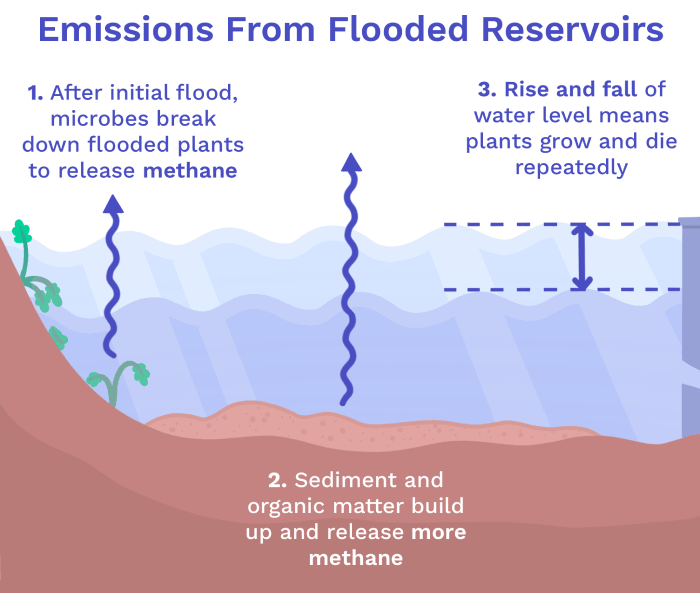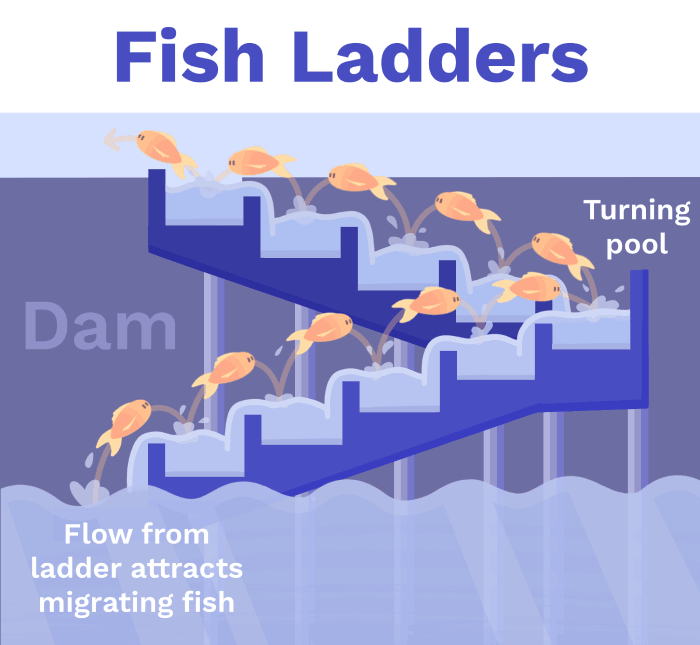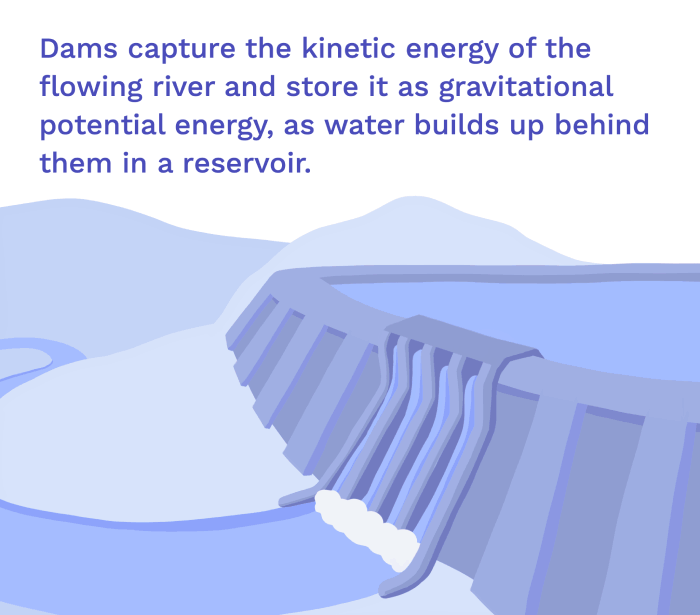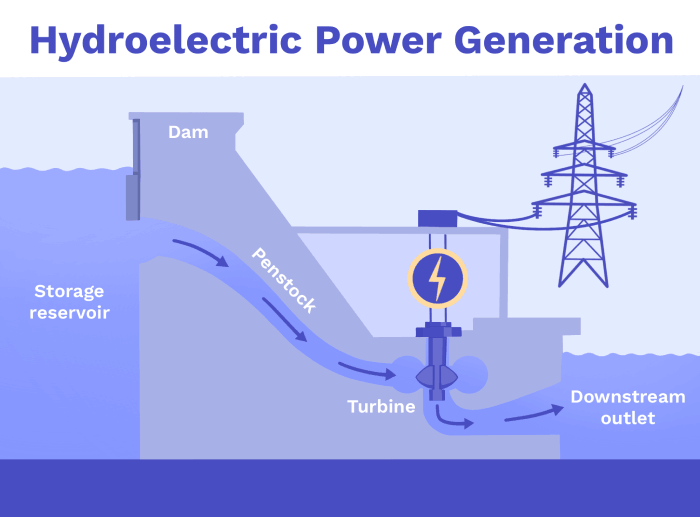Hydropower: Is the Flow of Rivers Enough to Power the World?
9 minute read
Updated on: 20 Jun 2021
Water on Earth is constantly moving: rain pouring, rivers flowing, glaciers melting. All this movement provides some huge opportunities to harvest energy
.

Earthly with umbrella
How can we turn the movement of water into energy
Hydroelectric power (HEP) with dams uses the energy of rivers to make electricity.
HEP may not get as much attention as wind and solar, but it is by far our biggest source (60%) of renewable electricity today
. It also accounts for about 16% of our overall electricity production
.
Since HEP is so widely used, we ought to carefully consider any damage it might be causing. But first, we’ll take a look at how it works.
How does HEP work?
Most of the world’s hydropower is captured by building large dams.
When we want to use this energy, we open a small gate in the dam to let water pass through. This falls through a channel and spins a turbine, which powers a generator to create electricity (similar to wind turbines). The whole process looks like this:
Roughly speaking, one cubic metre of water falling one metre every second can produce 10 kW of power (in a perfectly efficient system).
Why do we use so much HEP?
There are lots of reasons to think that HEP is great:
- it almost always emits less greenhouse gas than burning fossil fuels (more on this later)
- it’s a renewable resource, which means we’ll never run out of it (as long as rivers keep flowing)
- the reservoirs dams have countless other uses besides storing energy
The most significant benefit of hydropower is that it allows us to store the energy it produces.
While solar and wind are great at producing low carbon energy, they’re pretty useless when the sun’s not shining or the wind’s not blowing. We have a lot more control over HEP because we store energy up in dams and generate electricity from it whenever we want, without having to wait for the weather to change!
Hydropower can also be cheap. Because it doesn’t require any raw materials to run, the operating costs are low. Building a dam is usually expensive
, but they tend to last longer than wind or solar farms
. Altogether, they are cheap
:
So far, HEP sounds ideal. But there are some serious downsides which make hydropower a lot more problematic.
These changes all add up to equal some pretty serious environmental damage. Let’s take a look at them one by one…
Land use
Most of our hydropower production involves flooding a lot of land. The USA could produce the same amount of energy from Solar PV using only 13% of the space!
Flooding land for reservoirs is bad for many reasons. For example: local wildlife can be destroyed, villages are often flooded, and people have to move homes. But flooding land has some nasty effects on the climate too:
When we flood land, the microbes in the water slowly break down the flooded plants, releasing methane.
These emissions don’t only occur when the dam is first flooded. Sediment (loose material like sand) and organic matter naturally flow down rivers, but get trapped at the bottom of dams. Here they steadily release methane throughout the dam’s life.
Reservoirs also tend to rise and fall in depth more than natural lakes.This flooding and re-flooding means plants on the shore grow and die repeatedly, increasing methane emissions further.

Emissions from flooded reservoirs
By one estimate, reservoirs are responsible for 1.3% of all greenhouse gas emissions from humans - as much as the whole of Canada!
Still, HEP almost always releases far less greenhouse gas than fossil fuels (although this varies depending on where the dam is built). Emissions are particularly high when carbon-rich forest is flooded
.
If we plan carefully where we build dams, we could substantially decrease the amount of methane they release. But, unfortunately, methane release is only half of the story…
How do dams impact wildlife?
Many species of fish move upstream to lay their eggs. Dams often make this journey either extremely dangerous or impossible.
Fish ladders allow fish to “jump” up a dam, but these are only partially effective (particularly on steeper dams). In some places, the situation is so bad that local environmental agencies have to transport fish up and down the river in trucks!

Fish ladders
When we leave water sitting in reservoirs, the colder water with less oxygen sinks to the bottom. When we release this, the river conditions downstream change a lot, making it harder for plants and animals to survive.
To make matters worse, remember how we said that dams trap sediment in the river? These sediments provide nutrients for many species, so when it gets trapped upstream, living things downstream struggle to grow.
Can we improve hydropower?
Unlike other renewables, hydropower dams are considered to be a mature technology, meaning there is limited room for improvement. Therefore, it’s unlikely that technological innovation will radically improve how much energy dams can produce.
What else could we do?

Surfing Earthly
There are some creative ideas for how we can use wave or tidal energy. This natural motion of water may seem like a good opportunity, but we haven’t so far found a way to make them commercially viable
. This is for a few reasons. Tidal energy, for example, is currently only profitable in a handful of places where the tides are strong
. Likewise, the most energy from wave power is found in the roughest seas, but these seas also do the most damage, so equipment here gets damaged quickly
.
Conclusion
At first glance, hydropower seems perfect: it’s cheap, low-carbon, and allows storage. However, the social and environmental costs we’ve looked at make this decision a lot more complicated.
Another issue is that climate change and drought may cause reservoirs to dry up, reducing HEP capacity in many parts of the globe.
In response to all this, HEP growth has slowed in wealthy countries, which are running out of rivers to dam, and can afford other renewable energy sources. But large hydropower dams continue to be built in developing countries
. However, as power grids become more dependent on wind and solar, demand for storage capacity will likely increase, which could trigger a surge of interest in HEP
.
In the next few chapters we’ll take a closer look at why we need all this storage, and ways to get it without building large dams.
Next Chapter



